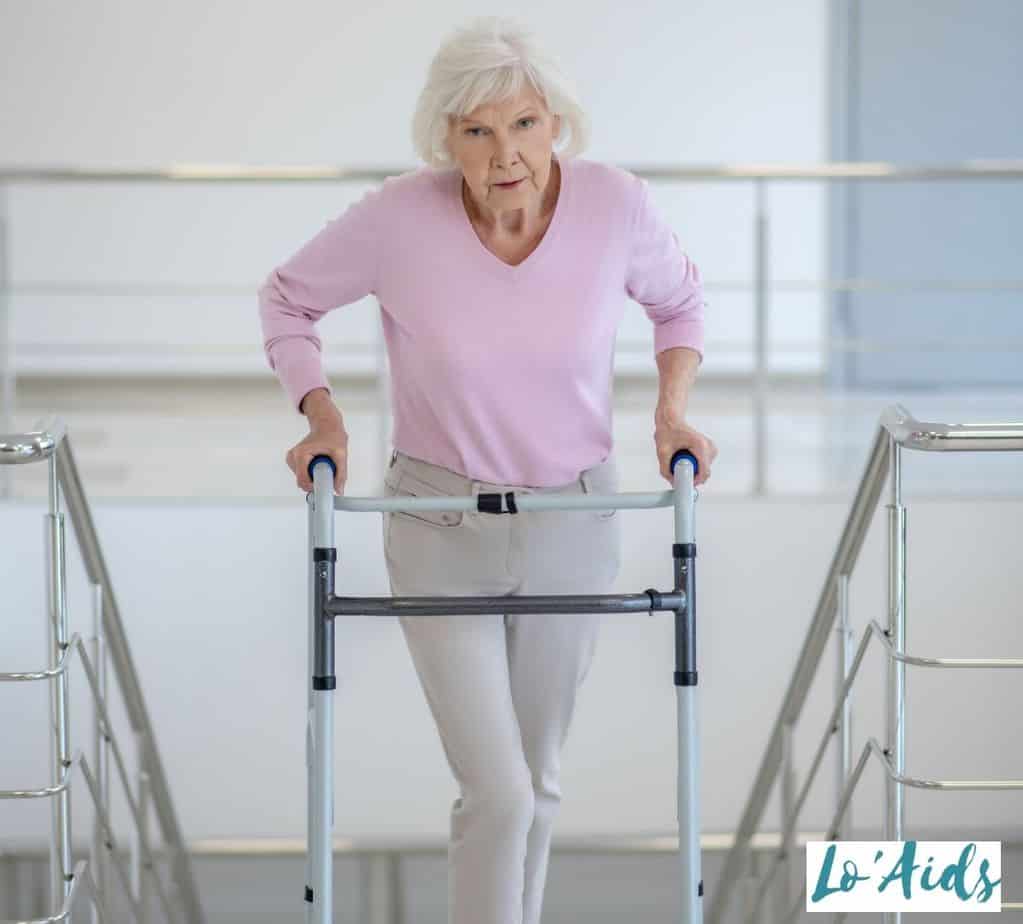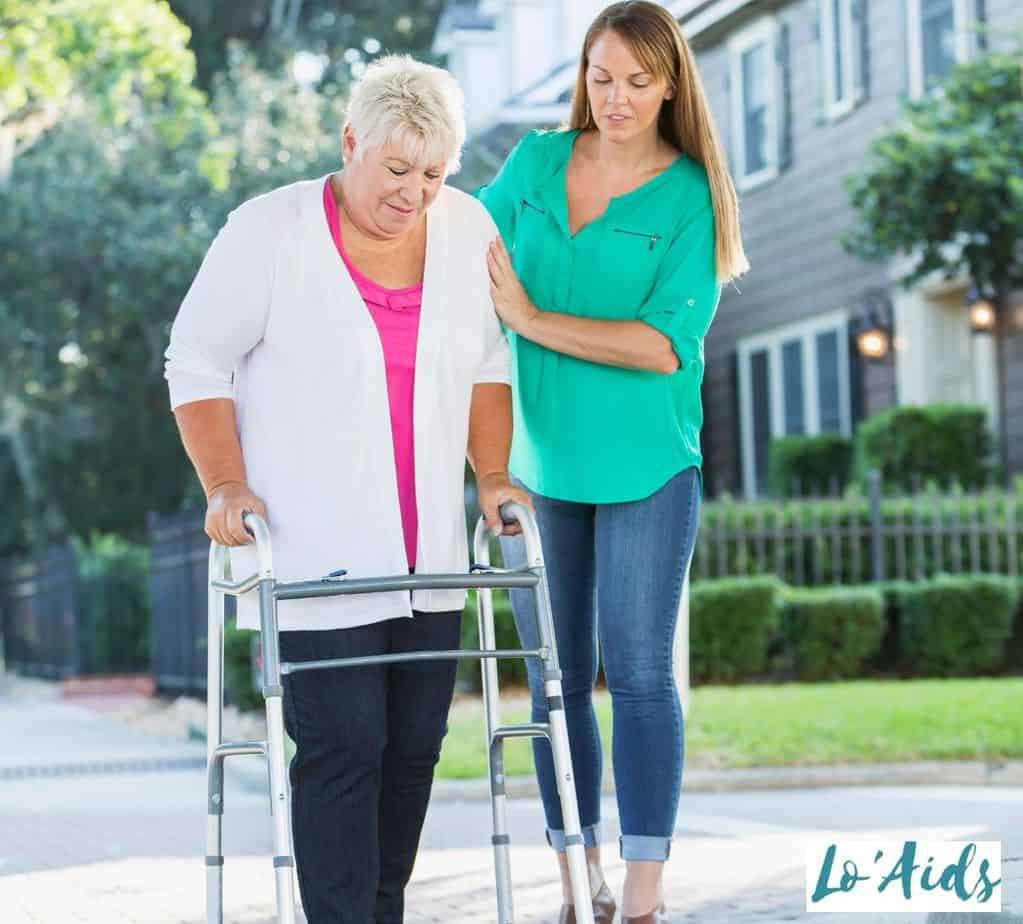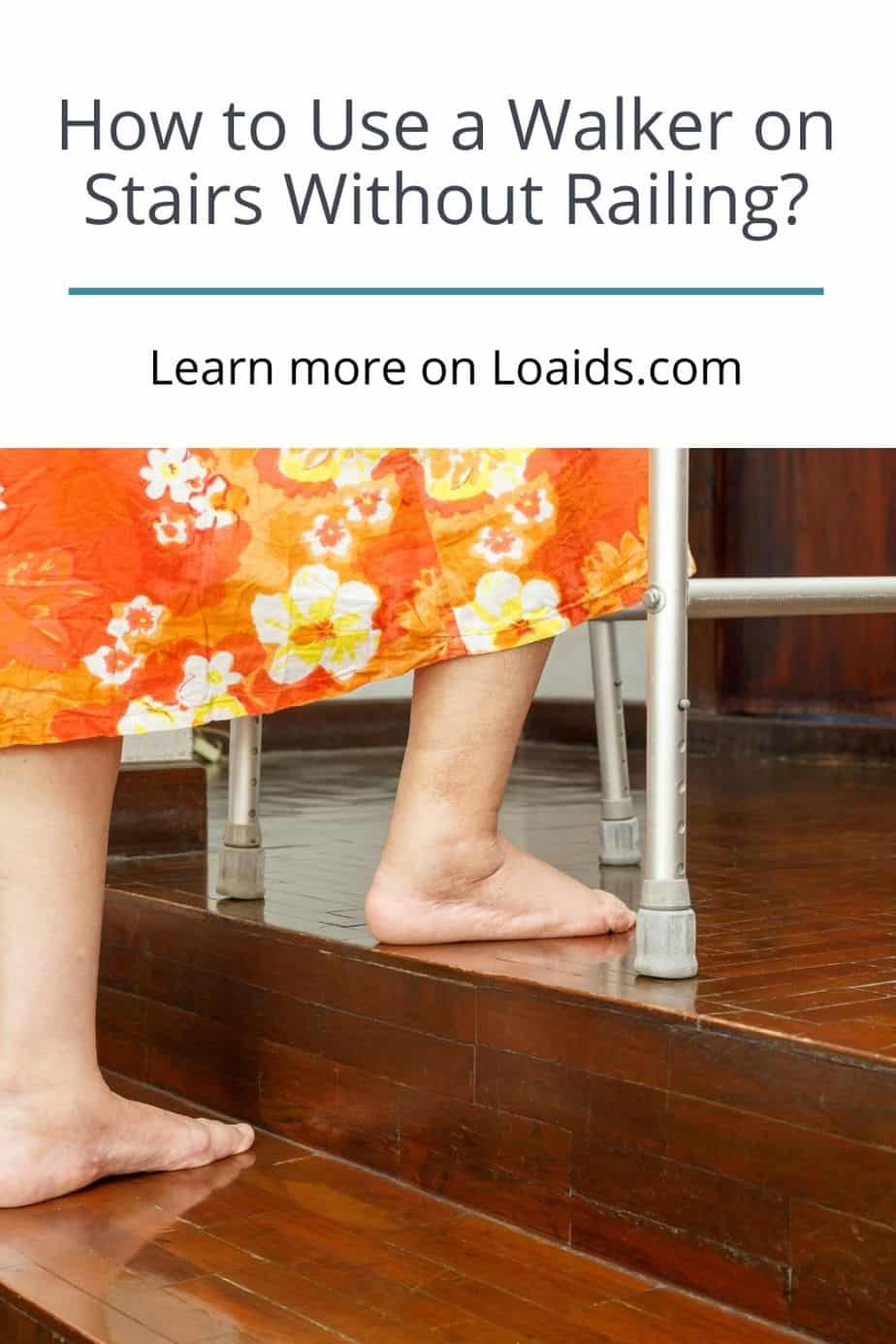If you or a loved one is new to using a walker or recovering with a walker, you may be wondering how to use a walker on stairs.
While using a walker isn’t always a walk in the park, using a walker on stairs is much easier than many people assume.
With the right technique, you can learn how how to use a walker on stairs without a railing.
This guide will help you to master the correct techniques on how to use a walker on stairs.
CHECK: The Best Upright Walker Reviews
Table of Contents
How to Use a Standard Walker on Stairs

It can be challenging to navigate stairs with a standard walker or any assistive device. To ensure safety and minimize potential injuries, you will want to ensure you are using your walker the right way.
First things first you have to ensure you have the right walker. So it’s vital you talk to your physical therapist for medical advice on what’s the right one for you.
Here’s how you use a standard walker on the stairs properly!
ALSO CHECK: How Do You Get Off a Walker?
How to Go Upstairs With a Standard Walker
If you are going up stairs with a railing when using a standard walker, the key is to position the walker appropriately at the base of the stairs to support you. [1]
First, turn the walking aid so the crossbar of the walker is next to you and position the two legs now facing the stairs onto the first step.
While gripping the railing, put your good leg on the first step. Push onto the first step, lifting your bad or injured leg onto the step.
Lift the walker legs from the first step onto the next step and repeat until you reach the top of the stairs.

How to Go Downstairs With a Standard Walker
How to go downstairs with a walker is similar to how to go upstairs with a walker. First, when approaching the stairs, rotate the walker so that the crossbar is again next to you.
Position the front legs on the first descending step, with the rear legs on the top step. Gripping the railing, descend onto the step below with the bad leg and step down with the good leg. Ensure your body weight is on the bad leg.
Move the walker down to the next step so that two legs are on the step that you are on and two are on the step below. Repeat the process until you reach the bottom of the stairs.
How to Use a Walker When There is a Curb?
This might seem simple but if you’ve had knee replacement surgery, hip surgery, or any other major surgery, you know how hard and painful it can be to move.

And it’s especially harder for an elderly person. But an occupational therapist will advise on moving a bit or doing light exercises for faster recovery.
And with this step-by-step guide, you will be up and about in no time.
How to Go Up a Curb With a Walker
There are two ways to go up a curb when using a walker. For the first method, when approaching the curb, place the entire walker on top of the curb. [2]
Lift your good leg onto the curb and, while pushing down on your walker and onto the curb, lift your bad leg onto the curb and continue walking.
For the second method, when approaching a curb, you can turn around so your back is facing the curb and your walker is against the curb. Pushing down on your walker for support, lift your good leg onto the curb.
Push up with your good leg to lift your bad leg onto the curb and lift the walker onto the curb. Continue with the rest of your journey.
The directions are effectively the same if you have a walker with heels (no wheels on at least two legs) vs. a walker with only wheels. When using a walker with wheels, make sure not to push forward when moving up a step. [3]
How to Go Down a Curb With a Walker
When going down a curb, make sure to put the walker onto the ground first. Supporting yourself on your walker, descend with the bad leg, then with the good and proceed with your journey.
Again, the instructions are virtually the same for walkers with heels vs. walkers without heels, but make sure not to push forward on a walker with only wheels while you are going down the curb.
How to Use a Walker on Stairs Without Railing?

When using a walker on stairs without a railing, the method is similar to going up the stairs with a railing but with some exceptions. [4]
When you approach the stairs, place the two walker legs onto the stairs as is done when there is a railing. Instead of gripping the railing, you can use your wall for support, but more weight will be placed on the walker.
Step up with the good leg and lift up the bad leg onto the stairs, lifting the walker onto the next step and repeating until you reach the top of the stairs.
Why Walker is The Best Option to Go Upstairs Rather Than Cane?
Whether you use a walker or a cane will depend on what type of injury you have, whether it affects both sides of the body or only one side and how severe the injury is. [5]
Because a walker offers four points of support while a single point cane only offers one, a walker can provide more stability when going upstairs or a curb, especially if there is no railing.
FAQs
What type of walker is the easiest to use?
There are a variety of walkers on the market, including walkers with no wheels, two wheels, four wheels and stand-up walkers with arm supports.
Which walker you choose will depend on what condition you have and what your recovery process is. Stand-up walkers, particularly those with fold down seating, offer the greatest benefit while walking so that users aren’t stopped over when walking.
What type of walker is the sturdiest?
The sturdiest walker is a walker without wheels, but because it doesn’t have wheels, it requires more energy to use. [6]
Depending on your condition, a walker with two wheels may be the best option if you want to balance sturdiness with ease of use. Check our guide on how to use a walker without wheels.
Conclusion
Walkers require a certain finesse to use properly, but whether you are recovering from surgery or adjusting to a new stage in life, using a walker is relatively straightforward.
Knowing how to use a walker properly and go upstairs can help you navigate any obstacle you may encounter and help you take a step in the right direction for your health.

Do you have other tips on how to use a walker on stairs? Let us know below!
Resources
- 1. Discharge Instructions: Using a Walker on Stairs and Steps [Internet]. Saint Luke’s Health System. [cited 2022 May 12]. Available from: https://www.saintlukeskc.org/health-library/discharge-instructions-using-walker-stairs-and-steps
- 2. How To Use A Walker [Internet]. Cleveland Clinic. Available from: https://my.clevelandclinic.org/health/articles/15542-how-to-use-a-walker
- 3. Using a walker: MedlinePlus Medical Encyclopedia [Internet]. Medlineplus.gov. 2019. Available from: https://medlineplus.gov/ency/patientinstructions/000342.htm
- 4. Elsevier – Clinical Skills │ Assistive Device Training: Walkers (Rehabilitation Therapy) [Internet]. elsevier.health. [cited 2022 May 12]. Available from: https://elsevier.health/es/preview/assistance-device-training-walkers
- 5. Available from: https://www.spineuniverse.com/wellness/mobility/how-choose-cane-or-walker#:~:text=Why%20are%20you%20getting%20the,your%20legs%2C%20for%20instance).
- 6. Acosta K. A Guide To The Best Walkers For Seniors [Internet]. Forbes Health. 2022. Available from: https://www.forbes.com/health/healthy-aging/best-walkers-for-seniors/





